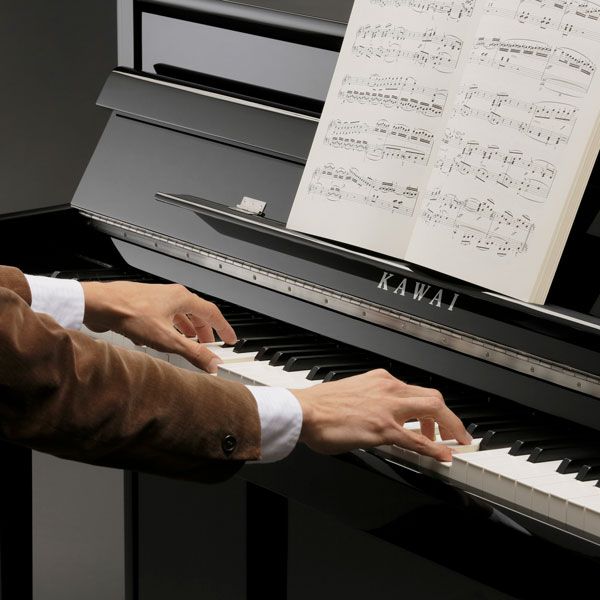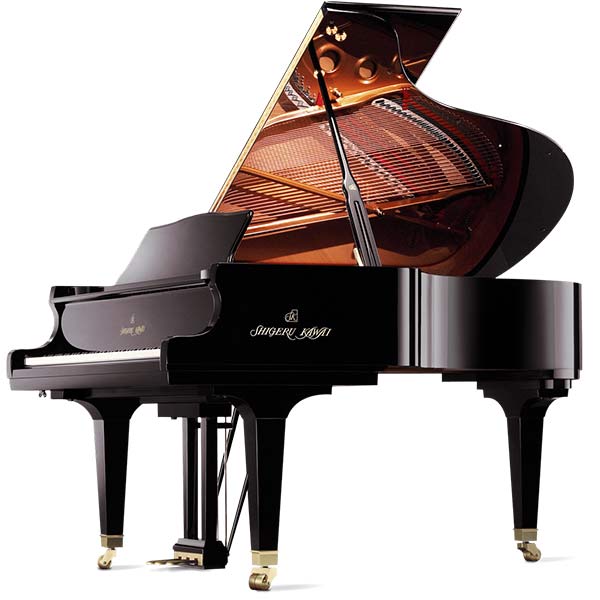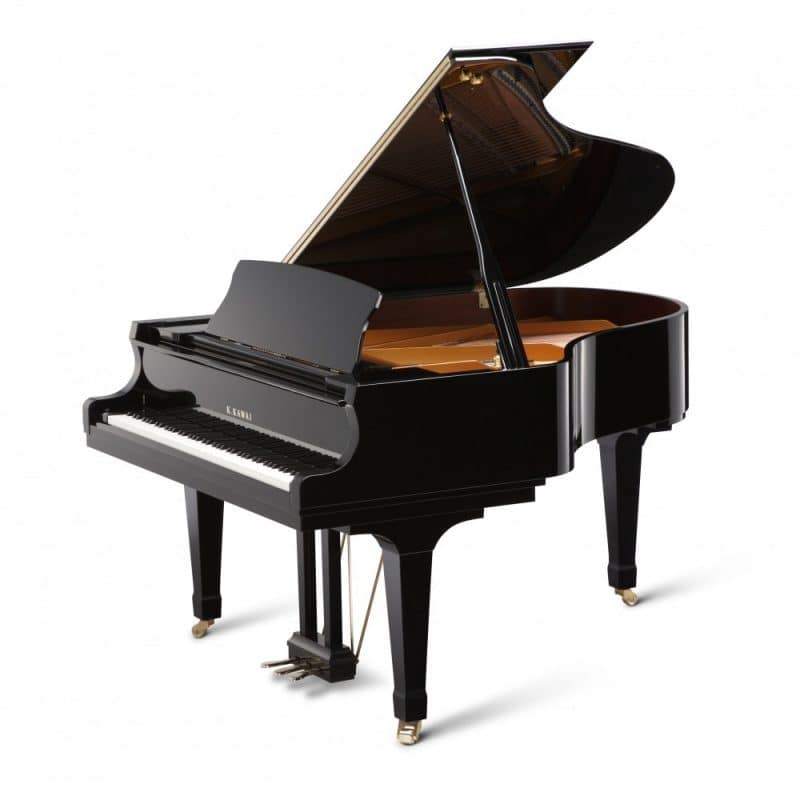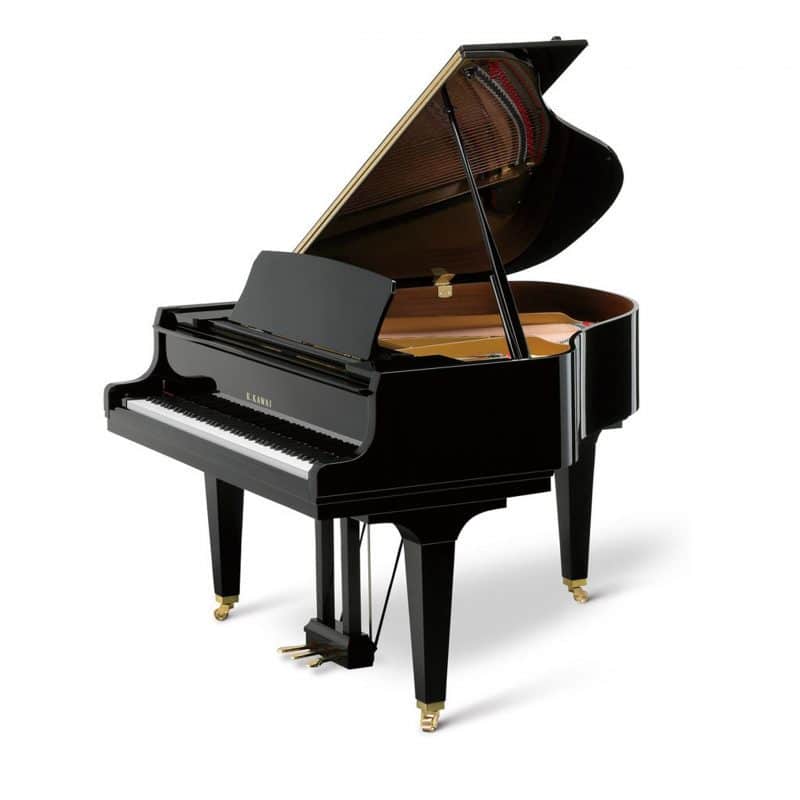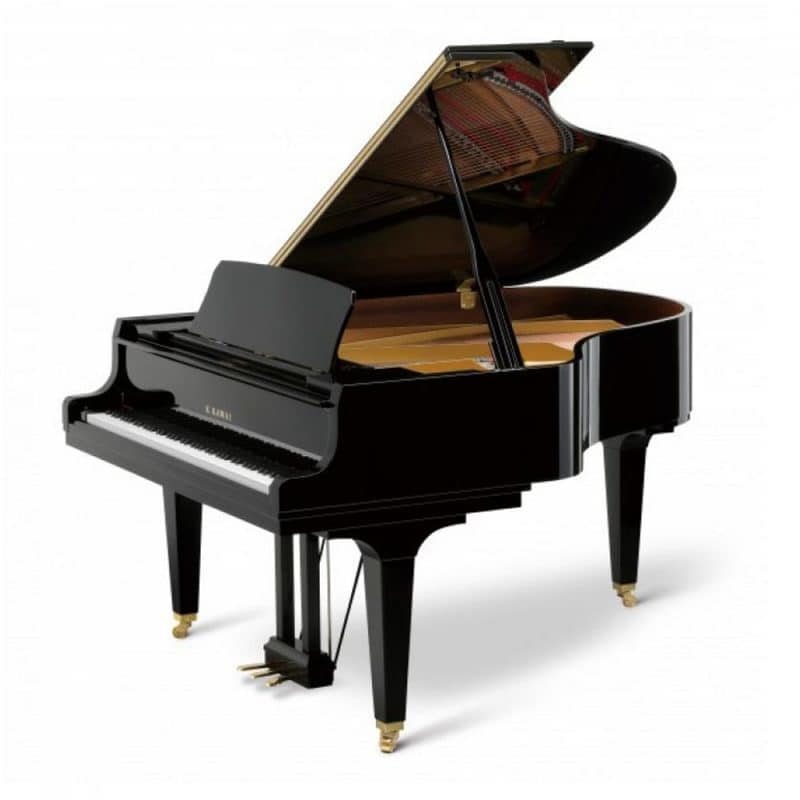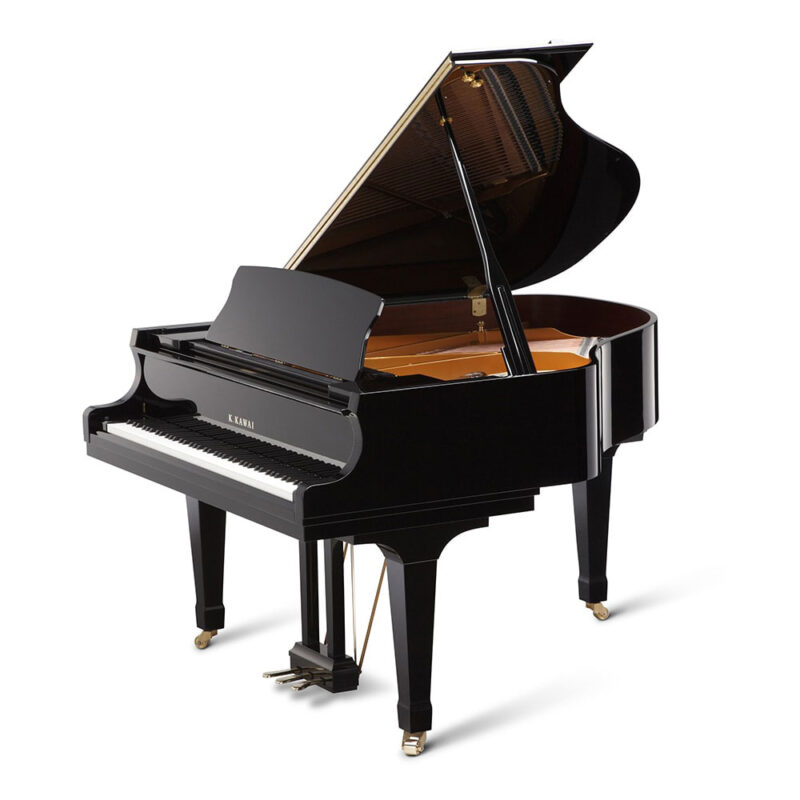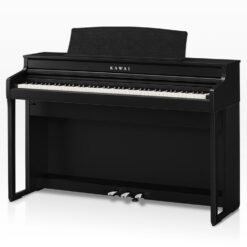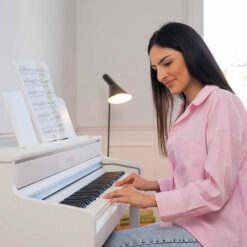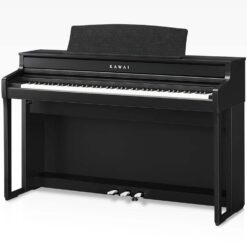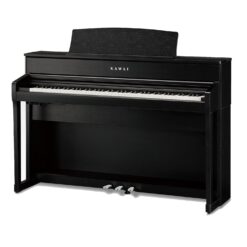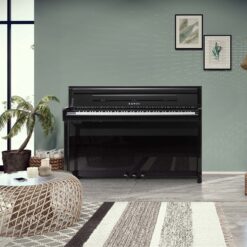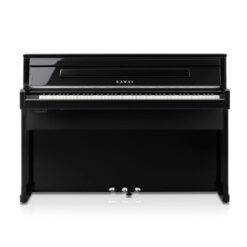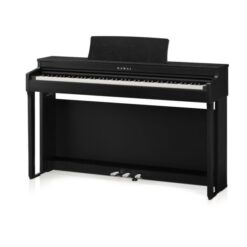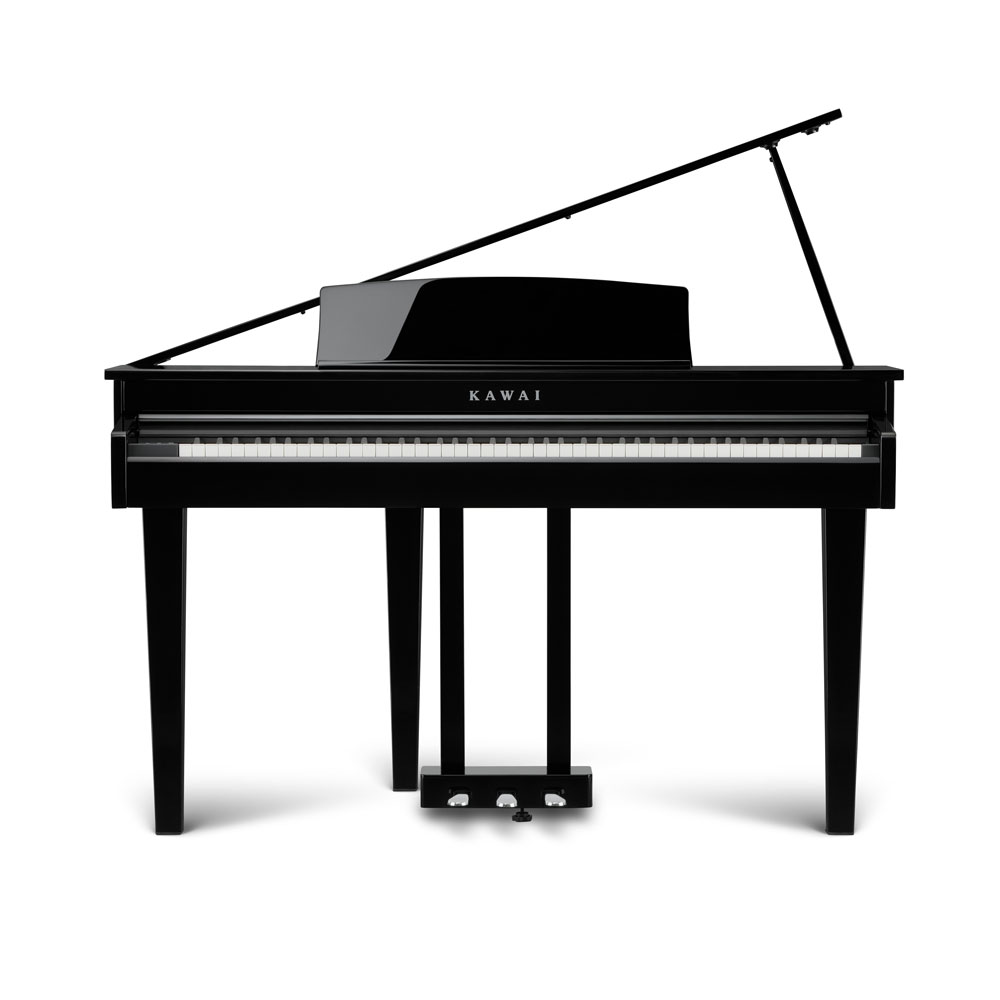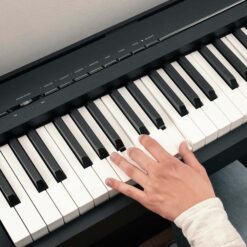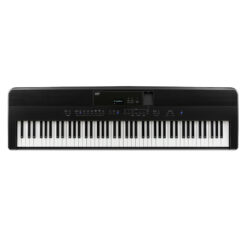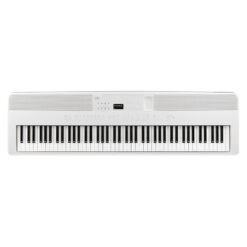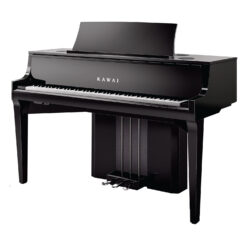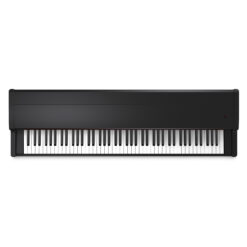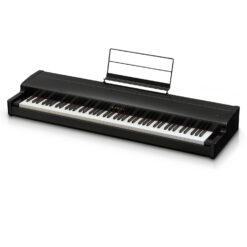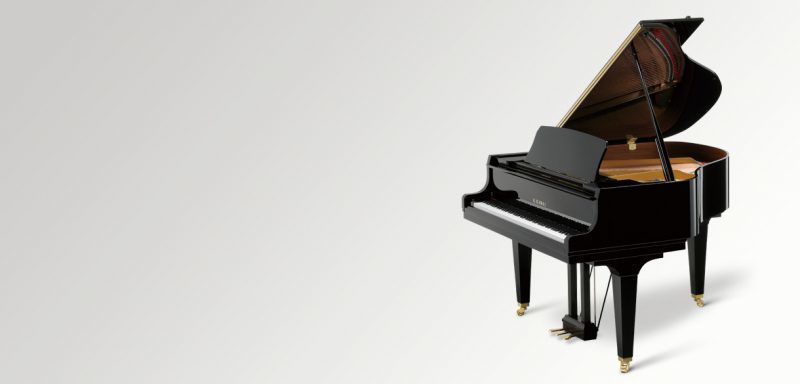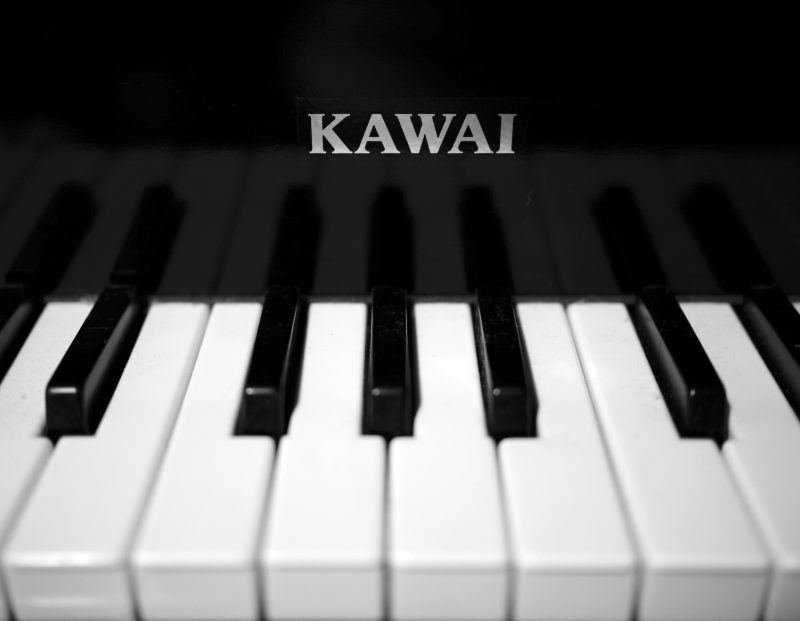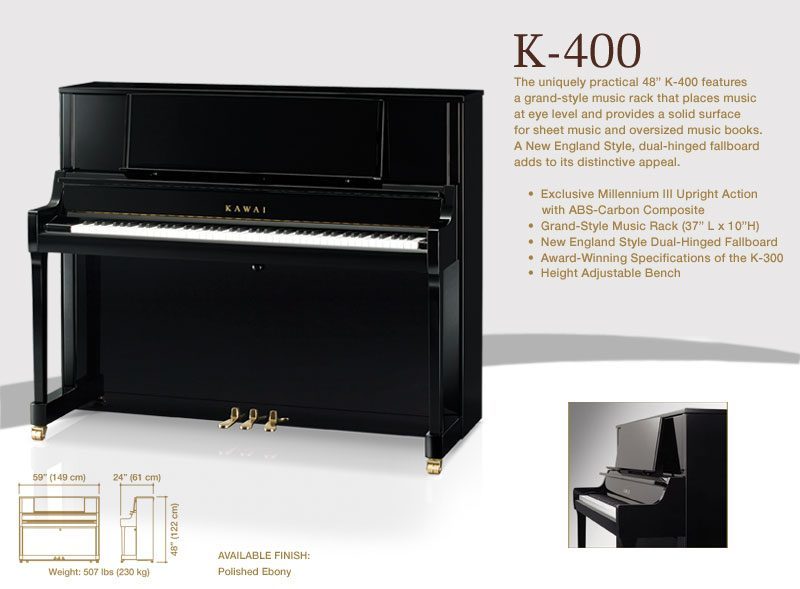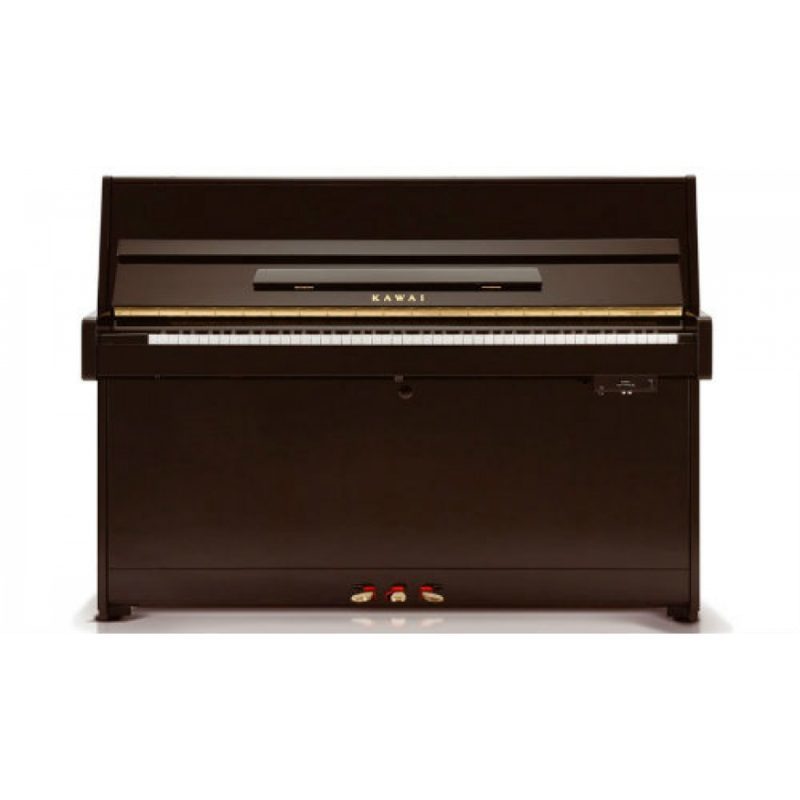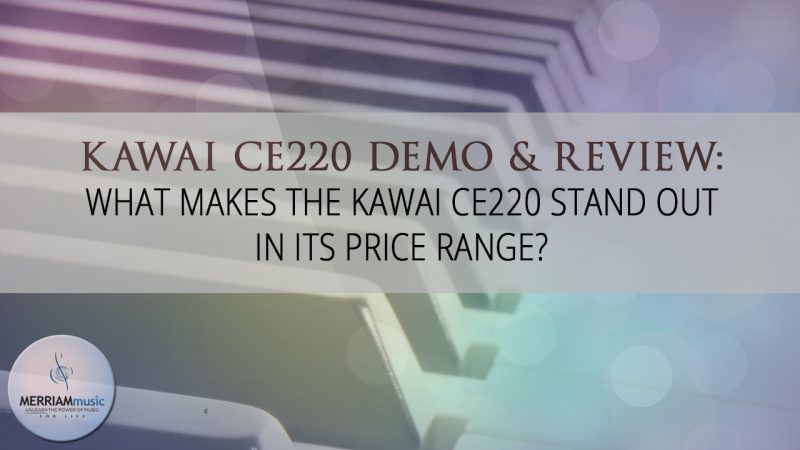KAWAI PIANOS
Kawai Pianos have stood as one of the world’s most trusted and popular piano manufacturers for more than 85 years. They have earned a hard-fought reputation as true innovators, leaders, and musical advocates, all while remaining family controlled and true to their core values.
Kawai is Japan’s second largest piano maker, and consistently in the world’s top 3 for volume. They are primarily known for their institutional uprights and grands; many universities, colleges, and music academies rely on Kawai pianos around the world to provide their students with consistent and satisfying practice tools, instructional grands, and concert instruments.
At this point in time, millions of people around the world have grown up playing Kawai pianos, and millions more are sure to follow.
The History of Kawai Pianos
Kawai began making pianos as a company in 1927, however Kiochi Kawai, the company’s founder and first president, began building pianos long before that.
Originally he collaborated with Yamaha as one of their very first and most influential designers and engineers for their fledgling piano division, and remained a significant force within the company until the Yamaha family elected to take the company public.
Following the transition to a share-holder controlled company, Kawai decided to begin his own company and began to compete with Yamaha. It has been a well-known rivalry ever since, with Kawai and Yamaha both becoming huge exporters of Japanese pianos – particularly from the 1960’s onwards.
Having just celebrated their 86th birthday, Kawai is one of the most financially healthy music companies in the world, and they have continued to maintain piano making as their primary concern.
KAWAI UPRIGHT PIANO MODELS
KAWAI K200
The K200 offers an incomparable combination of tone, touch and value. Released in 2014 in place of the Kawai K2, this new line of K-series uprights will become the new standard in piano performance.
Learn MoreKAWAI K300
The K300 offers an incomparable combination of tone, touch and value. At 48″ it is a perfect choice for students, teachers, and professionals alike.
Learn MoreKAWAI K400
The K400 offers an incomparable combination of tone, touch and value. Released in 2014 this brand new model from Kawai features an over-sized music desk, and New England style fall-board.
Learn MoreKAWAI K500
The K500 offers an incomparable combination of tone, touch and value. At 51″ it is a perfect choice for as a grand piano replacement for an advanced player in a small space.
Learn MoreKAWAI K800
Built in Japan entirely by Kawai, the K800 has full sostenuto, premium hand-selected spruce soundboards, premium double-felted mahogany hammers, oversized music desk, and grand-like key sticks for a super high level of accuracy and speed.
Learn MoreKAWAI ND21
The ND21 is a game changing piano, and possibly the best alternative to a used 48″ Japanese piano on the market.
Learn MoreKAWAI K15
Designed in the “continental ” style the Kawai K15 is one of the top rated pianos on the market under $7,000.
Learn More| MANUFACTURER | UPRIGHT PIANO MODEL | LENGTH | WIDTH | HEIGHT | WEIGHT | MSRP (USD) | |
|---|---|---|---|---|---|---|---|
| 23" (58 cm) | 59" (149 cm) | 43" (109 cm) | 431 lbs (195 kg) | $7,193 | $7,053 | ||
| 22.5" (57 cm) | 59" (149 cm) | 45" (114 cm) | 459 lbs (208 kg) | $9,593 | $9,053 | ||
| 24" (61 cm) | 59" (149 cm) | 48" (122 cm) | 500 lbs (227 kg) | $14,660 | $13,053 | ||
| 24" (61 cm) | 59" (149 cm) | 48" (122 cm) | 507 lbs (230 kg) | $15,593 | $13,853 | ||
| 24.5" (62 cm) | 59" (149 cm) | 51" (130 cm) | 525 lbs (238 kg) | $18,963 | $16,520 | ||
| 26" (65 cm) | 60" (153 cm) | 53" (134 cm) | 626 lbs (282 kg) | $29,993 | $25,320 | ||
| 23" (58 cm) | 59" (149 cm) | 48" (134 cm) | 474 lbs (215 kg) | $7,860 | N/A |
KAWAI GRAND PIANO MODELS
KAWAI GL10
The GL-10 offers the same attention to detail and quality found in Kawai’s larger pianos – in a baby grand size to fit any room or venue.
Learn MoreKAWAI GL20
The action design and components are comparable to those in our RX and GX Series pianos to provide outstanding touch and playability. With it’s warm, rich tone and classic good looks, the GL-20 will be an impressive addition to any home.
Learn MoreKAWAI GL30
The full-perimeter rim (accomplished by the use of a stretcher bar across the front) gives the piano an incredible resonance and power.
Learn MoreKAWAI GL40
The extended key length on all of the GL’s have made these instruments even more effective as practice and training pianos for aspiring professional players.
Learn MoreKAWAI GL50
With their Millennium III carbon-fibre action, cutting-edge scale design, and it’s overwhelmingly positive reception by the professional community made this a must-have through the late 1990’s, right through until 2013.
Learn MoreKAWAI GX1
The GX-1 offers a level of elegance and craftsmanship that is unsurpassed for a piano of its size.
Learn MoreKAWAI GX2
The GX-2 is one of the worlds best pianos under 6ft and features some of the same componenets and design elements of the Shigeru Kawai SK2 grand piano.
Learn MoreKAWAI GX3
The GX-3 impresses with a dignified elegance and distinct tone evoking the qualities of a much larger grand. With outstanding tone and touch in a versatile size, it is a preferred choice of professionals..
Learn MoreKAWAI GX5
The GX-5 is the artists’ choice for a large home recording studio, smaller performance venue.
Learn MoreKAWAI GX6
With a large dynamic range and complex harmonic presentation, this is truly the artists’ & studio choice.
Learn MoreKAWAI GX7 SEMI-CONCERT
The flagship GX grand piano fulfills the most demanding roles: performance space, professional recording studio, or a pianist’s musical companion.
Learn More| MANUFACTURER | GRAND PIANO MODEL | LENGTH | WIDTH | HEIGHT | WEIGHT | MSRP (USD) | |
|---|---|---|---|---|---|---|---|
| 5'0 (153 cm) | 59" (150 cm) | 40" (102 cm) | 622 lbs (282 kg) | $19,593 | $18,387 | ||
| 5'2 (157 cm) | 59" (150 cm) | 40" (102 cm) | 661 lbs (300 kg) | $26,393 | $24,520 | ||
| 5'6 (167 cm) | 59" (150 cm) | 40" (102 cm) | 688 lbs (312 kg) | $34,660 | $31,987 | ||
| 5'11 (180 cm) | 60" (152 cm) | 40" (102 cm) | 714 lbs (324 kg) | $41,860 | $38,120 | ||
| 6'2 (188 cm) | 60" (152 cm) | 40" (102 cm) | 736 lbs (334 kg) | $47,860 | $43,450.00 | ||
| 5'5 (166 cm) | 59" (150 cm) | 40" (102 cm) | 690 lbs (314 kg) | $47,493 | $39,453 | ||
| 5'11 (180 cm) | 61" (153 cm) | 40" (102 cm) | 712 lbs (324 kg) | $54,927 | $45,320 | ||
| 6'2 (188 cm) | 61" (153 cm) | 40" (102 cm) | 734 lbs (334 kg) | $70,660 | $58,653 | ||
| 6'7 (200 cm) | 61" (153 cm) | 40" (102 cm) | 772 lbs (351 kg) | $79,993 | $65,320 | ||
| 7'0 (214 cm) | 62" (154 cm) | 40" (102 cm) | 840 lbs (382 kg) | $89,593 | $73,053 | ||
| 7'6 (227 cm) | 63" (157 cm) | 40" (102 cm) | 880lbs (400 kg) | $103,993 | $84,520 | ||
| 6'1 (185 cm) | 59" (150 cm) | 40 (102 cm) | 935 lbs (424 kg) | $165,000 | $145,000 |
KAWAI DIGITAL PIANO MODELS
All New Pianos
All New Pianos
CA/DG Series
CA/DG Series
Digital Pianos
Digital Pianos
Digital Pianos
Digital Pianos
Digital Pianos
All New Pianos
Digital Pianos
Kawai Digital Accessories
All New Pianos
All New Pianos
Digital Pianos
Digital Pianos
Digital Pianos
Digital Pianos
Headphones
Digital Pianos
Kawai CE220 Demo & Review: What Makes Kawai CE220 Stand Out In Its Price Range?
10 years ago13k viewsKawai Pianos features & Specifications
The Kawai Sound
Kawai has always had a sound which was distinctly “non-asian”; or more specifically, a warm, deep sound with a subtle attack and lots of complexity to its overtones. Although it isn’t an “American” sound either, it’s far closer to a Steinway or Mason & Hamlin tone than any other Asian manufacturer. This is likely the reason that Steinway chose Kawai as the manufacturer of Boston pianos. There are several factors which contribute to Kawai’s characteristic warmth:
- lower-tension scale design vs. Yamaha / Samick / Young Chang
- geometry of the actions are designed to give greater range and finesse in the lower dynamic ranges
- use slightly thinner but dryer older spruce
- lower density felt on their hammers
Notable Features
Kawai is best known for their action innovations, their grand piano rim designs, and their over-strung scale designs.
Of these, the action designs are by far what Kawai has fought hardest for, and became one of the most controversial piano builders through the 1970’s and 1980’s because of it. Kawai currently maintains one of the largest R&D divisions of any musical instrument company in the world, and their principal manufacturing facility at Ryuyo Japan is also one of the only ISO14001-certified ‘green’ factories in the musical world.
When Kawai claims the mantle of “The Future of the Piano”, it is not stated lightly.
Millennium III Action / Ninja Action
It has long been acknowledged that the use of wood in piano actions was a compromise at best – one of the biggest misconceptions is that because actions were traditionally made of wood, it must have been for an acoustic or musical reason. Quite the contrary – wood was nothing more than an economical, easy material to manufacture with. Compared with other materials available to piano builders, wood was light, strong, inexpensive, and could be milled, carved, and bonded easily. However, wood also reacts with temperature and humidity, and so seasonal changes have always played havoc with the regulation and overall mechanical behavior of pianos.
Many companies have tackled this problem, the most well-known of attempts being Steinway’s failed experiment with Teflon bushings. For the same reasons that Kawai was developing it’s composite actions, Steinway had tried to replace traditional bushing material with Teflon, to reduce the dynamic friction caused by seasonal changes in North America. Unfortunately, there was an insufficient field-testing of the innovation, and in a short period of time owners discovered that the bushings had loosened and were causing loud, audible clicking throughout the piano. The backlash was swift, and the narrative throughout the industry quickly turned against all ideas of improvement.
It was within this climate of distrust that Kawai released their first ABS composite action, and for the next 20 years, spent an enormous amount of time and energy proving the merits of their design. It really wasn’t until the late 1990’s that the tide began to turn, and by the mid 2000’s, all written publications were dismissing the arguments against Kawai’s actions as nothing more than fear-based propaganda.
Kawai’s last two versions of its composite action series have been received with overwhelming enthusiasm: The Millennium III Action, and the Ninja M3 action. Both use carbon composites to replace parts traditionally made of wood, with the very conscious exception of the hammer and shank. Kawai claims, and has published academically-scrutinized research, that their actions are more responsive, faster, and easier to maintain than traditional wood actions. The principles are straight-forward: carbon fibre doesn’t react with temperature and humidity, and therefore several advantages can be gleaned:
- The actions do not change in their response depending on temperature or humidity
- The action materials are lighter in weight, allowing for less leading of the keys and generally a faster ‘reset’ speed of the action
- The action can be regulated to a tighter tolerance, since no gaps need to be left to allow for the expansion and contraction of the wood
- The action is more even over it’s lifetime, since there is no wear-and-tear on the components – even in the mid-range.
The actions have decades of research and field-use to back up their claims of durability and endurance, and now with Mason & Hamlin’s WNG action also in the market, the strength of many of their arguments have been further substantiated.
Scale Design and Construction
Kawai offers a rare combination of features and materials quality for the price ranges that they cover. Taken out of context, none of the elements of Kawai’s construction are particularly unique within the industry, and can often be found on several competitors’s models and lineups.However, on closer examination, it becomes rather apparent that almost no other competitors bring the same standards in such a wide range of feature categories as Kawai does – and Kawai manages to accomplish this in 4 different lines across a $50,000 price spread.
- Maple-capped bridges in nearly all models, upright and grand
- Vertically laminated bridges in all top upright and grand models
- Aged, AAA-grade sitka spruce in all models (K15 – GX7)
- Maple framework on all models
- Pure-copper bass strings on all models
- Locator-pin construction technique for > 0.005″ tolerance
- Composite Action design across models
- Nickel-plated Tuning pins across all models
- 10 Year FULL Warranty, transferrable to any owner
- The fastest recorded repetition speed in every model size and designation
MERRIAM Pianos Locations
Merriam Pianos - Oakville
Merriam Pianos - Vaughan
Merriam Pianos - Robert Lowrey Showroom
Kawai Articles
The Kawai GL-10 Baby Grand Piano Could Be The Most Advanced Grand Piano Under $20,000
Hi, I’m Stu Harrison and we’re here at the Merriam Pianos Oakville showroom just outside [...]
Apr
Merriam Pianos Academy: What Is a Used Yamaha U1 Upright Piano Worth?
I’m Stu Harrison, and this is another segment in our series on the Yamaha upright [...]
Apr
The Kawai GL-40 5’11” Grand Piano Is Poised To Become The #1 Institutional Grand Piano
Hi, this is Stu Harrison, we’re here at Merriam Pianos in Oakville, Ontario just outside [...]
Apr
Yamaha U1 vs Kawai K300 – A Comprehensive Comparison
The K-3 is a brand-new design from Kawai. It just came out in 2014 following [...]
May
What Makes The Kawai ES100 Stand Out In The Digital Piano Market?
Hi, My name is Stu Harrison, and I am coming to you from Merriam Pianos [...]
Mar
Of all Kawai Pianos, Why the K400 got so much attention at NAMM 2015
Kawai K400 Piano Review The Kawai piano brand is in the midst of a significant swell [...]
Mar
Kawai K15 Review: Why Has Kawai’s K-15 Been Recieving So Much Attention
Today we’ll be discussing an instrument that has a very personal past to me, the Kawai K15 Continental [...]
Apr
What Makes The Kawai CE220 Stand Out In Its Price Range?
What makes this digital piano so great? We’re going to start with the [...]
Apr
Whats New With The Kawai K300 – Review and Video
Lets take a look at the Kawai K300 upright piano, and most importantly what they’ve [...]
Apr
Kawai ES7 Portable Digital Piano Review
The Kawai ES7 is not new to the North American digital piano market. In fact, [...]
Apr
Everything You Ever Needed To Know About Baby Grand Pianos
Hi, I’m Stu Harrison and I’m here with Merriam Pianos in Toronto, Canada. And today [...]
Apr
A Crash Course in the Science of Buying a Brand New Piano
A brand new piano is an investment; it can give wings to your talent with [...]
Jan

